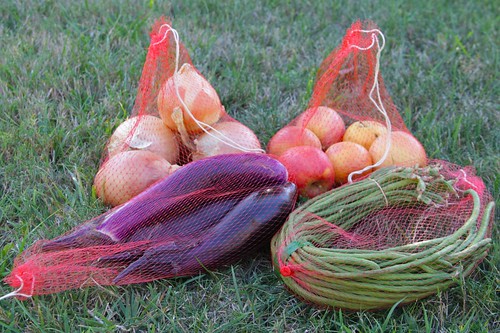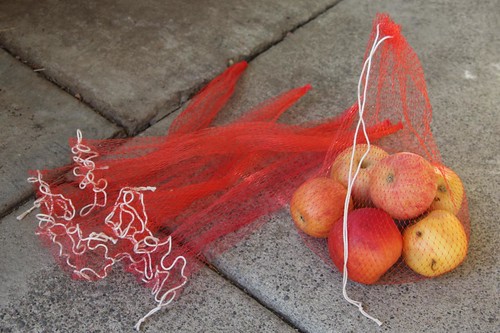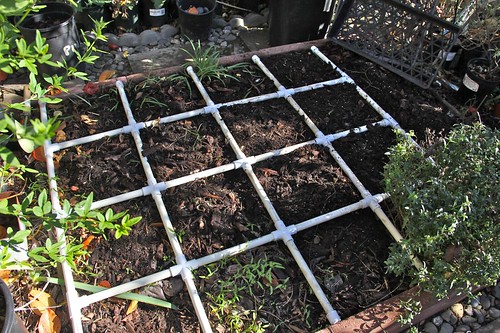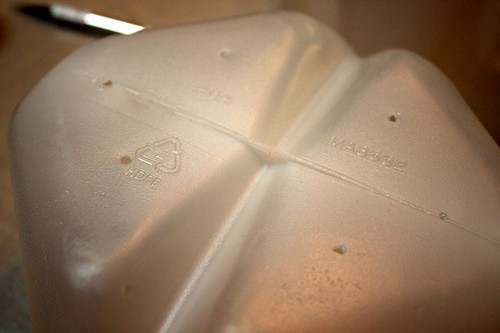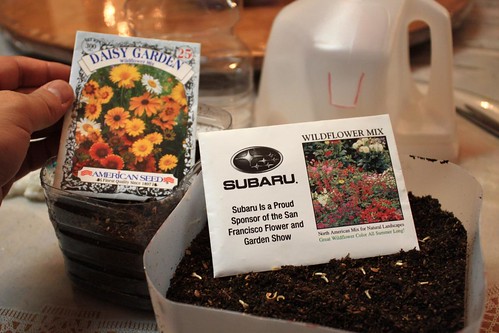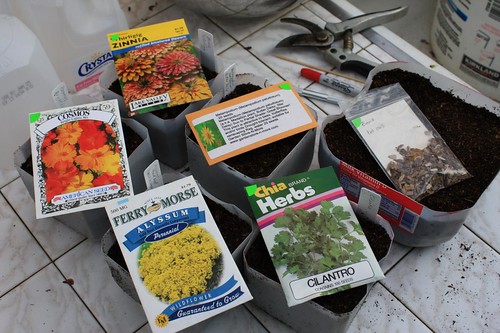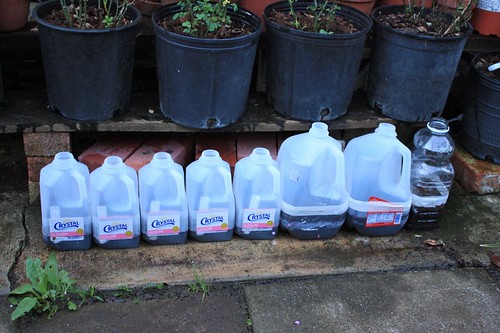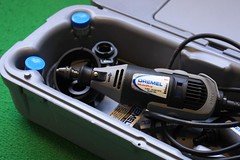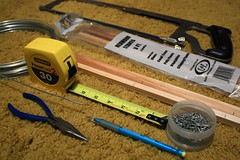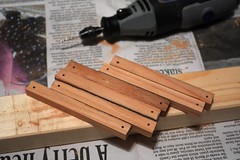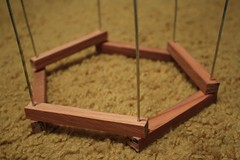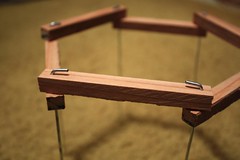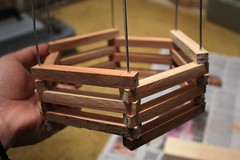We have been using reusable grocery bags for a couple years now and have reduced the number of plastic bags that we get… but I wanted to get more since we either use them up (we just have five of them) or forget them at home (I can keep more in the car). I bought some zTotes which are like the ones we have now.
While searching, I noticed reuseable produce bags, which made me think… We should use those too, so I searched for some to buy, but then realized that maybe I can make some with those mesh bags that we get with ginger, onion and little potatoes.
So I made these.
It was pretty easy since the bottom was already made. I just turned the top edge and weaved a string in and out to form a draw string to close the bag once filled.
I tested it and it worked well for most produce, but greens and Broccoli kinda got a little damaged, so I purchased some reuseable produce bags by Flip & Tumble for these.
Hopefully, we’ll have much less plastics coming into the house, including plastic produce bags.

